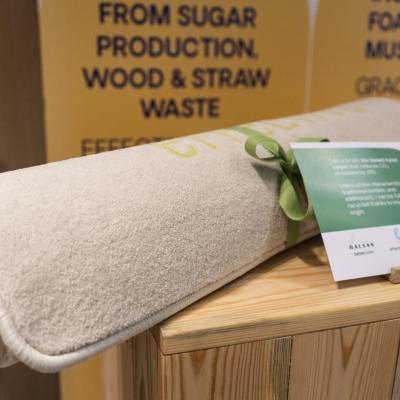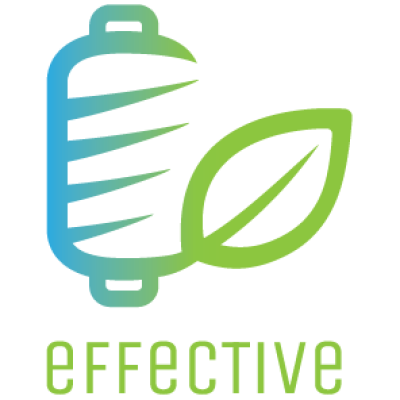Textiles and plastics are critical to a wide range of human industries and needs. Yet these products mostly rely on fossil fuels for their production, bringing significant costs to the climate. Cheap synthetic fibres such as polyester are widely used in fashion and fabrics; in 2015, polyester production in the fashion industry generated the same carbon emissions as 180 coal-fired power plants.
In the CBE JU-funded EFFECTIVE project, a multi-corporation team developed new methods to create sustainable bio-based fibres and plastics using renewable feedstocks and innovative technologies. The project aimed to move production away from crude oil, and to bring these products into the circular economy.
'The limits of the linear economy model are now clearer than ever,' says Mattia Comotto, head of circular economy & sustainability at Aquafil and EFFECTIVE project coordinator. 'With the technological and industrial progresses made all over the world, the make-use-dispose paradigm can no longer be used as a model, since resources – especially the fossil-based ones – are limited,' he explains.
The limits of the linear economy model are now clearer than ever.
Mattia Comotto, Project coordinator
Sourcing renewable feedstocks
EFFECTIVE worked to improve the entire value chain for bio-based polymers, from the production of feedstocks – the raw materials used in manufacturing – to end-of-life management.
The project predominantly leveraged two main sources of feedstocks: sustainable sugars and sustainable vegetable oils. These were both produced via innovative technologies that either minimised side products or generated more value from waste streams. 'In identifying sustainable feedstocks, we didn’t look only at their origin, but also at the environmental footprint of the processes necessary to manufacture them,' notes Comotto.
Creating bio-based polymers
EFFECTIVE used biotechnology solutions to convert these sustainable feedstocks into bio-based building blocks for materials. These building blocks underwent chemical conversions to produce bio-based polymers, which were then used in various targeted applications.
Under the EFFECTIVE framework, team members developed and optimised all steps at the pilot scale to Technology Readiness Level (TRL) 5, and all processes at demonstration scale up to TRL 7/8 by producing large-scale samples (tons) of renewable polymers. These include bio-based nylons, which were successfully tested in the production of textile fabrics, swimsuits, cycling clothing prototypes and carpets. They were also tested in the engineering plastics sector and for packaging applications.
Closing a sustainable loop
The EFFECTIVE project was conceived from end-to-end, meaning that for all targeted bio-based polymers the team defined technological solutions to close the loop in the materials’ cycle. 'Using natural and renewable resources instead of fossil-based feedstock is just a piece of the overall solution,' Comotto adds.
'Indeed, should these bio-based products find their way to landfill or incineration, the benefits of making them from renewable resources would be limited.' The end-of-life processes used in the EFFECTIVE project include Aquafil’s chemical depolymerisation technology, a mechanical recycling technology, and a composting technology for bio-based polyesters.
In identifying sustainable feedstocks, we didn’t look only at their origin, but also at the environmental footprint of the processes necessary to manufacture them.
Mattia Comotto, Project coordinator
Bio-based solutions poised to hit markets
Beyond successfully demonstrating the production, use and end-of-life solutions for bio-based materials, EFFECTIVE also assessed their sustainability to confirm a lower environmental footprint compared to fossil-based counterparts.
'Additional R&D investments will be deployed in order to finalise the development programme and achieve a readiness level where the properties and performance of the developed bio-based solutions perfectly match the market requirements,' says Comotto.

